One trend that’s taking off in schools is the construction of a separate makerspace where teachers can bring their students to engage in hands-on, creative projects. This might be a section of the library, or a converted computer lab, or even a spare classroom that’s equipped with tools and materials to support student design and creation.
But you don’t need a separate, dedicated space to foster creativity. In fact, every classroom can become a makerspace with the right attitude and a little ingenuity.
Here are five key elements of learning space design that can transform any school space into a makerspace.
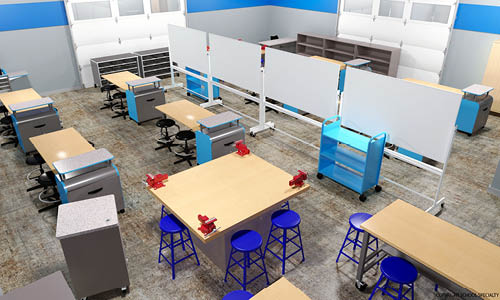
Furnishings and decorations that inspire creativity
The traditional classroom setup, with neat rows of desks facing the front of the room, does little to inspire creativity. In fact, it sends a counterproductive message: Students should be quiet, stay in their seats, and listen to the teacher talk.
On the other hand, imagine the message that students get when they walk into a room with many different kinds of learning zones, colors, and seating options—regular chairs, soft seating, and even some bouncy seats: “We’re going to do things a little differently here, and you’re invited to take part and have some fun as you learn.”
As we mentioned in an earlier post, culture is a key aspect in cultivating creativity—and the design of the learning space contributes to the culture that exists there. Teachers can help spark creativity among students by giving them choices in where they will sit and work, and by creating a vibrant and visually stimulating environment. Include posters, manipulatives, and other items that get students thinking and challenge their perceptions; just don’t go overboard in decorating the room, as too much stimulation can actually do more harm than good.
Movable, flexible furniture that can be used for a variety of purposes
Modular furniture that can easily be moved around the room allows teachers and students to create flexible seating arrangements to support project-based learning. For instance, seating can be arranged to face the front of the room for whole group instruction and then quickly rearranged into small groups for collaborative projects.
What’s more, furniture that serves multiple purposes allows teachers and students to maximize the possibilities of limited spaces for learning.
When Northwest Middle School in Greenville, S.C., remodeled an area of its library to create a makerspace, officials included a Lego wall so that students could build Lego designs on the wall—and the surfaces of bookshelves are used to give students more space for working and also for displaying student creations.
Spaces for students to collaborate and brainstorm ideas
Students don’t just need room to work on their creations; they need space to plan as well. They need opportunities to research, think, and sketch out their ideas—either alone or in partnership with others. Creating a separate zone for ideation that is equipped with digital devices, whiteboards, and/or paper and pencils can help support this activity.
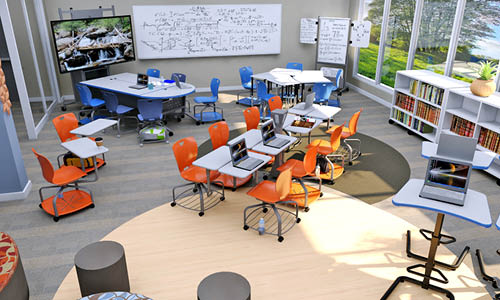
You might consider adding soft seating options to this area as well, because students are apt to be most creative when they are feeling at home in their surroundings. Soft seating options can make the space comfortable and inviting for students to huddle together, brainstorm, and bounce ideas off each other.
Places to store tools and materials
Pay attention to your storage needs. There should be plenty of shelf or cabinet space to store equipment safely. Make sure materials are easy to find and are clearly labeled. Dangerous materials should be stored in locked cabinets or high up where young children can’t reach.
Features that ensure student safety
Above all, a makerspace should be a safe place for students to work. The space should be well lit, ventilated, and equipped with a first aid kit and a fire extinguisher. There should be adequate surface space for students to spread out materials and use tools safely. Keep all pathways to exits clear, and make sure students clean up to keep the space free from clutter. All procedures and instructions for using tools and equipment should be clearly posted, and students should learn how to safely use all tools as they’re introduced.
Short on Space? No Problem…
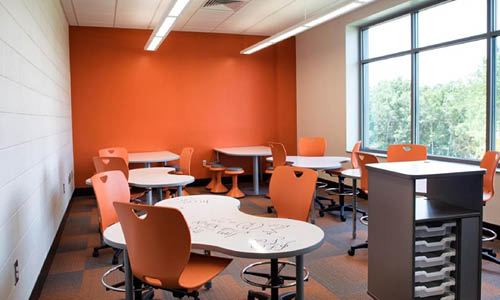
Any classroom can be a makerspace, even if you’re short on actual space. If your classrooms aren’t big enough to comfortably store tools and materials for student projects, consider investing in a mobile makerspace solution. You can purchase or outfit mobile carts with tools and supplies for all kinds of activities, then wheel them out as needed and store them away in a closet when they’re not in use.
Carts can be set up with various themes: an art supplies cart, an electronics cart, and so on. This is also a great solution if you lack the budget for your own supplies. A mobile makerspace cart can be shared among several classrooms as needed and stored in a central location between uses.
Integrating a hands-on, constructivist approach to learning can be daunting at first. If you haven’t done so before, you’ll naturally have many questions as you begin. Our free guide, “Cultivating Student Creativity,” can help. It explains what elements are necessary to get started and how to set up classrooms or makerspaces to support student creativity successfully.
Deanna Marie Lock
Deanna Marie Lock is a reputable educational leader with a multifaceted background as an elementary school teacher, assistant principal and principal, Instructional Solutions consultant, Instruction and Intervention Subject Matter Expert, and today as the Director of Category Expertise and Support across all of School Specialty’s target curriculum solutions and widespread product categories. With 18 years spent specifically in the public education sphere, Deanna now uses this in-classroom expertise to add a personalized, intentional approach when professionally advising to an audience she herself had been a part of for nearly two decades. Deanna is passionate about building purposeful long-term internal and external customer connections, and helping students find their passion and highest potential, too!

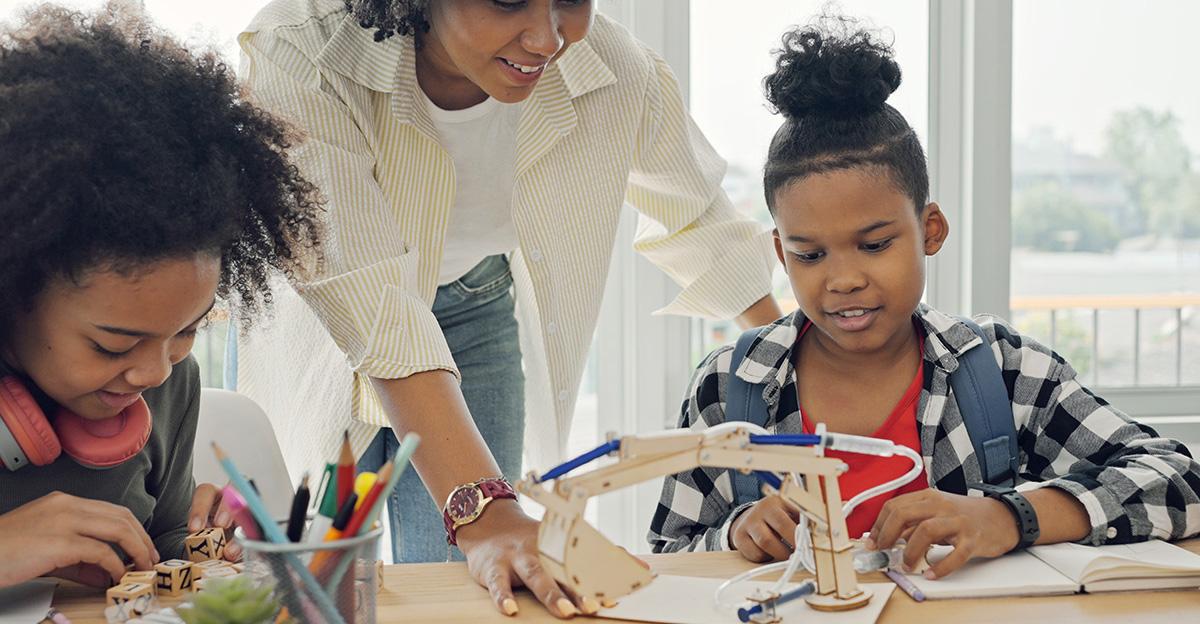



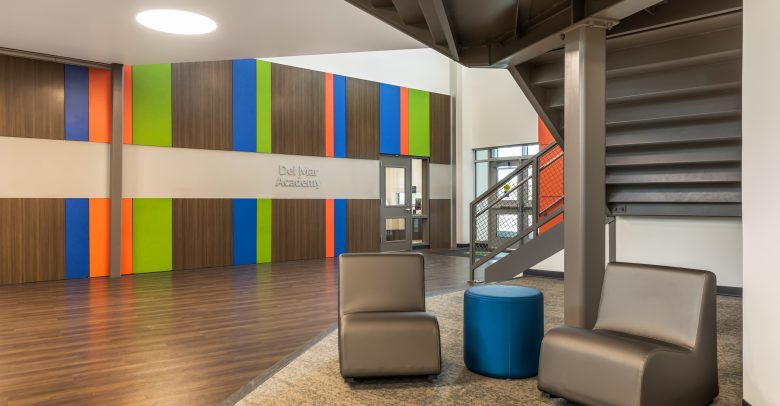
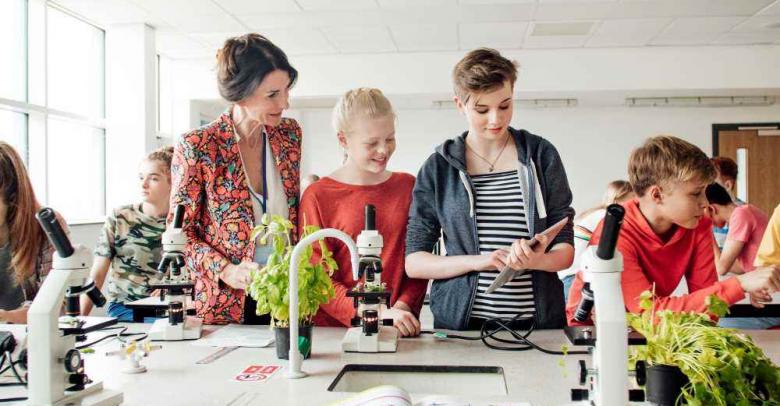
Leave a Reply